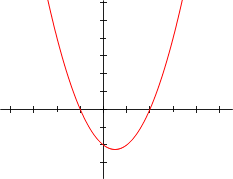Regression Analysis > Nonlinear Regression
What is Nonlinear Regression?
Nonlinear regression uses nonlinear regression equations, which take the form:
Y = f(X,β) + ε
Where:
- X = a vector of p predictors,
- β = a vector of k parameters,
- f(-) = a known regression function,
- ε = an error term.
The formal definition is that if your regression equation looks like the one above, it’s nonlinear regression. However, this is actually a lot more difficult than it sounds. Take the following nonlinear regression equations:
- The Michaelis-Menten model: f(x,β) = (β1 x) / (β 2 + x).
- Y = β0 + (0.4 – β0)e-β1(xi-5) + εi.
These both meet the requirement of fitting the form Y = f(X,β) + ε, but that isn’t immediately obvious without some in-depth knowledge of algebra and regression analysis.
The good news is there is a much simpler, more intuitive definition of nonlinear regression:
If your model uses an equation in the form Y = a0 + b1X1, it’s a linear regression model. If not, it’s nonlinear.
It’s much easier to spot a linear regression equation, as it’s always going to take the form Y = a0 + b1X1*.
Linear vs. Nonlinear Regression

In order to understand why, you need to take a look at the linear regression equation form.
Linear regression uses a linear equation in one basic form, Y = a +bx, where x is the explanatory variable and Y is the dependent variable:
Y = a0 + b1X1.
You can have multiple equations added together:
Y = a0 + b1X1 + b2X2 + b3X3…
And you can even square a term to model a curve:
Y = a0 + b1X12.
Even though it’s modeling a curve, it’s still a linear regression equation because it’s in the form Y = a +bx.
A nonlinear regression equation can take on multiple forms.
It’s worth highlighting the intuitive definition again: If your equation looks like the examples above (i.e. it looks like Y = a +bx), it’s linear. If not, it’s nonlinear.
Note/caveat/disclaimer (AKA, there’s always an exception in statistics):* It’s true that if your model has an equation in the form Y = a +bx, then it’s linear. However, there are a few cases where a nonlinear equation can be transformed to mimic a linear equation. If this happens, the nonlinear equation is called “intrinsically linear.” For example, the nonlinear
Y = Β0X / (Β1 + X)
can be transformed with a little algebra to become intrinsically linear:
1/Y = 1/β0 + (β1/β0)*1/X
= θ0 + θ1*1/X.